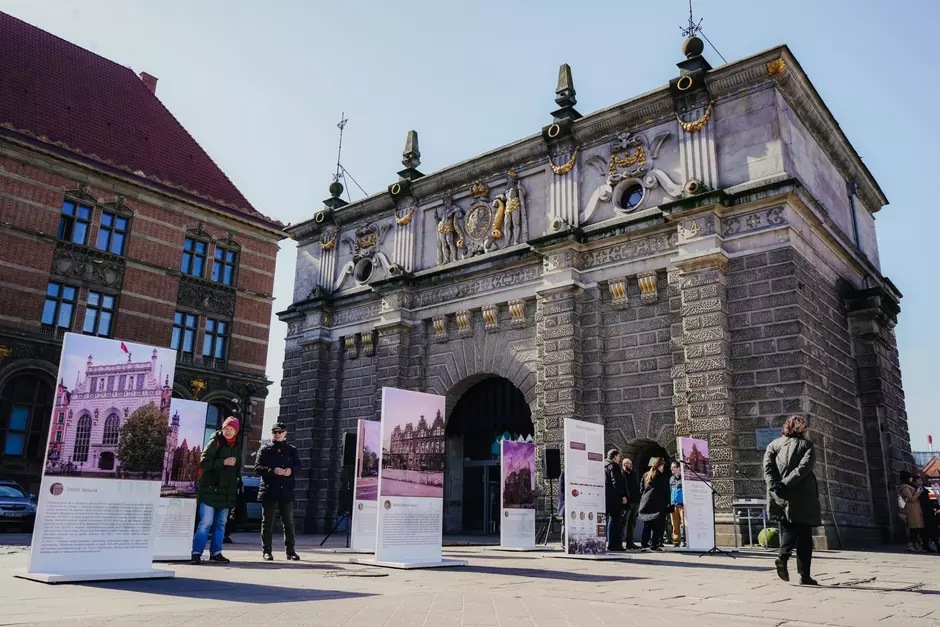‘A city of ruins – a city of hope. Gdańsk destroyed – Gdańsk reborn’ is the title of an exhibition by the Institute of National Remembrance (IPN), which opened on Wednesday in Gdansk. Photographs of the destroyed city after the war and 3D images of rebuilt buildings were presented.
The exhibition was commissioned by the Gdańsk IPN. It was opened on 27 March – a date not coincidental, as it is the 79th anniversary of the capture of Gdańsk by the Red Army. The city defended itself, with German forces setting up a “fortress” here on Hitler’s orders. Some of the buildings were destroyed during the heavy fighting, the rest were burnt down by the conquerors after they had taken the city.
For the Soviets, this was German Danzig, on which they had to take revenge for all the hostilities of the war. Who would have cared in such circumstances that the city had grown as part of Poland for 350 years? In March/April 1945, the most valuable districts and quarters of old Danzig were turned into ashes: the Old Town, Osiek, Zamczysko, the Main Town, Granary Island, Long Gardens.
The ruined area was larger than the sea of ruins in Warsaw. More effort was also required to rebuild. The destruction of the historic centre of Gdańsk was estimated at almost 90 %.
Two concepts clashed: building a completely new city, in the Soviet style, and reconstruction in the original historical shape. Eventually, in 1947, the communist authorities opted for the second scenario to emphasise the age-old Polishness of Gdansk. For the most part, the old street grid was retained. The townhouses were not rebuilt but rather twentieth-century variations on the old architecture were erected in their place.
The city’s main monuments have been recreated as faithfully as possible and they became the subject of the exhibition.
Visitors can see the Main Town Hall, Artus Court, the Great Armoury, the Green Gate, the Great Mill and St Mary’s Basilica in 3D.
Adrian Andrzejewski





